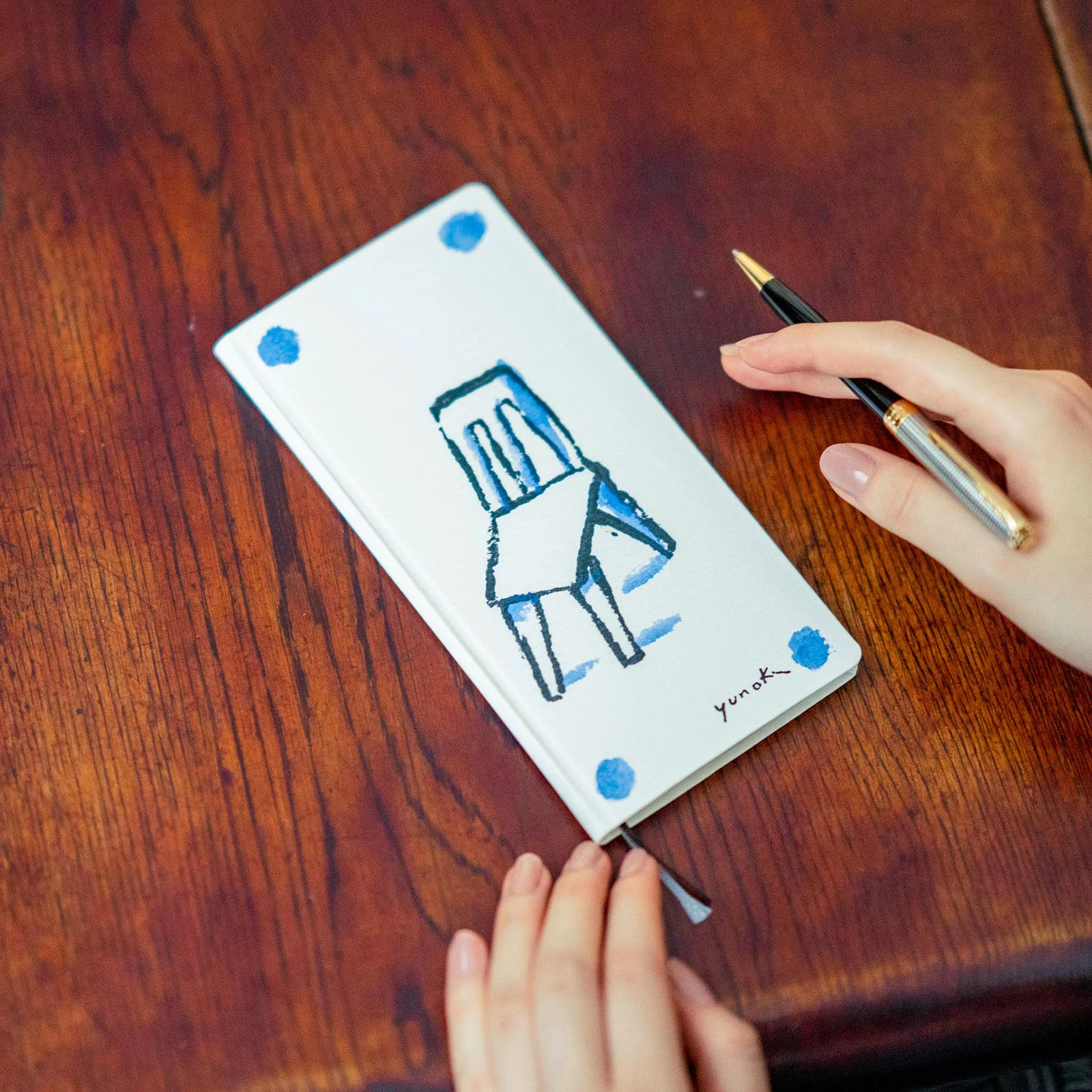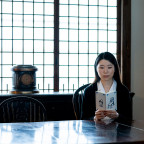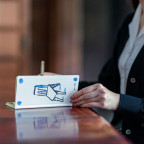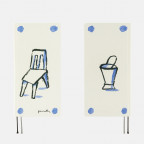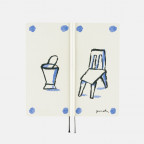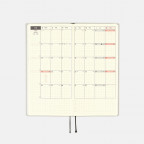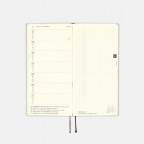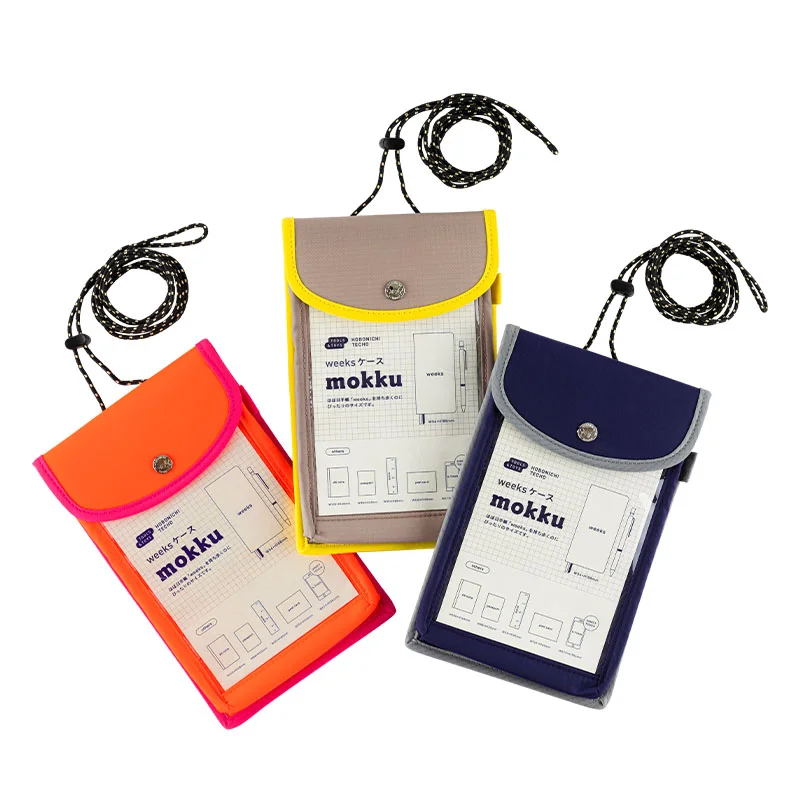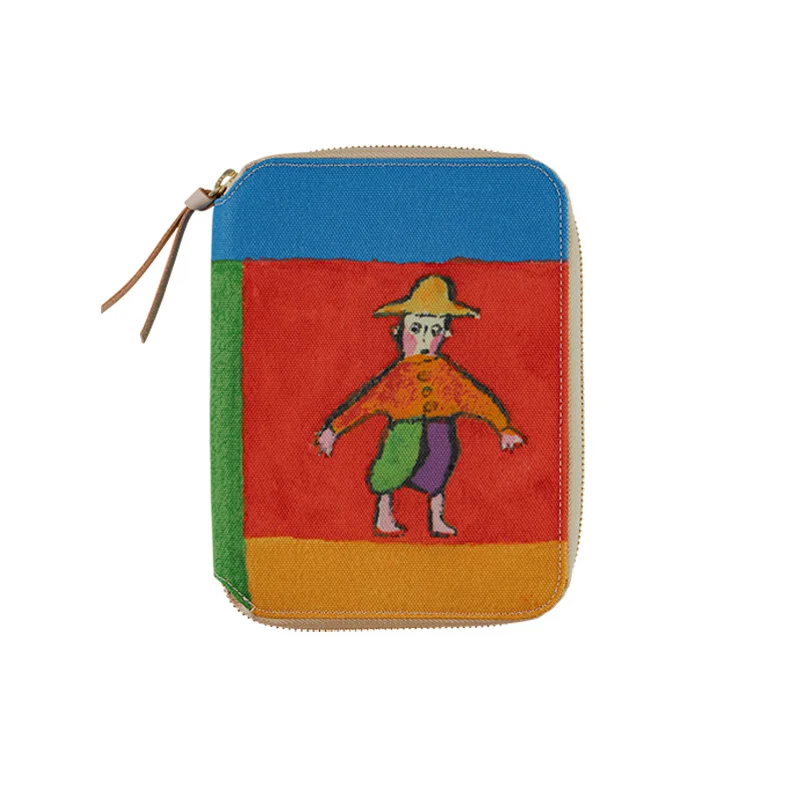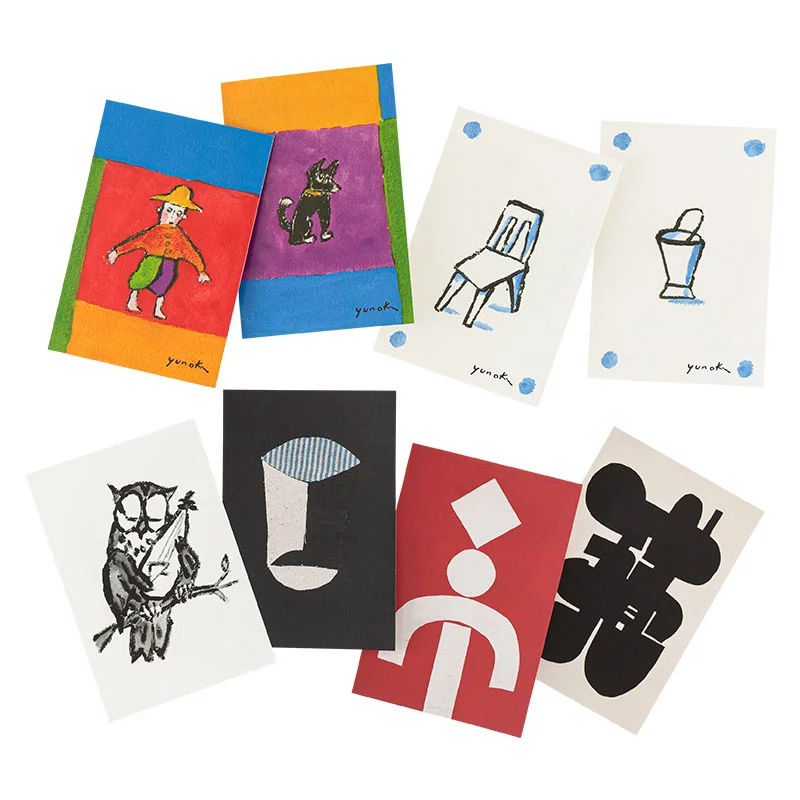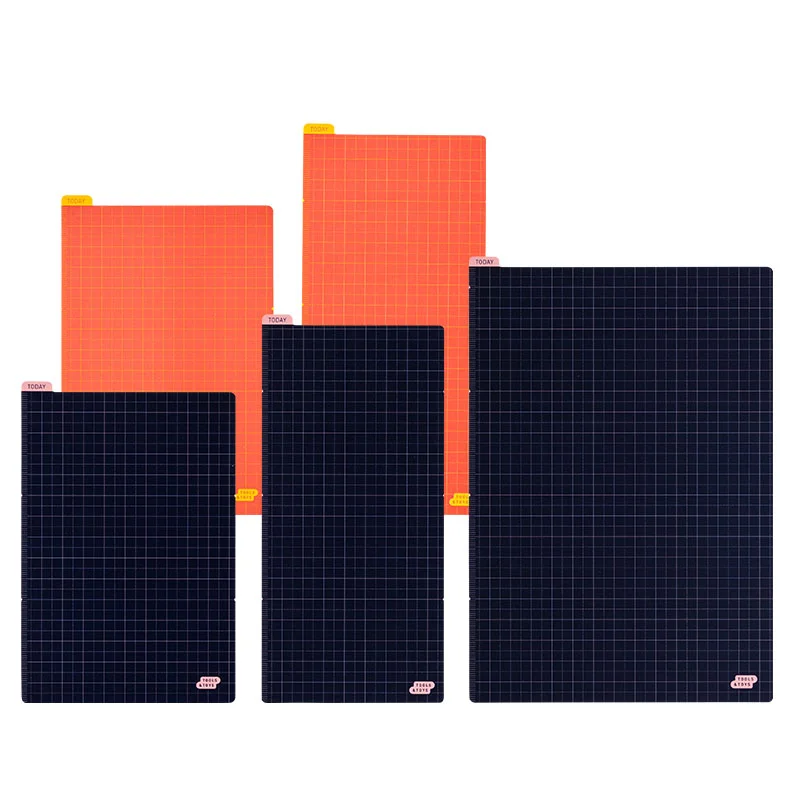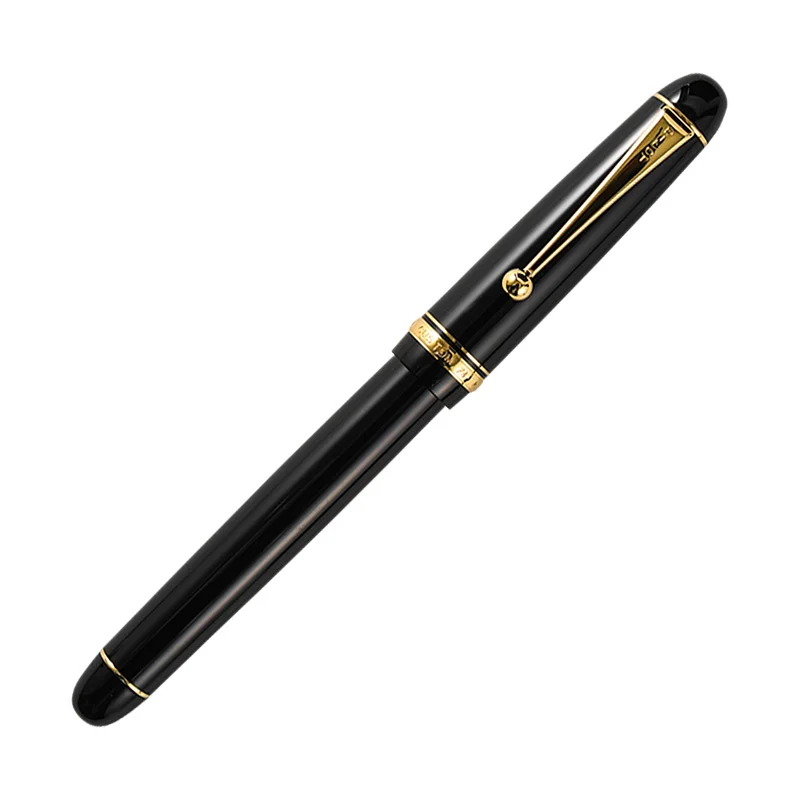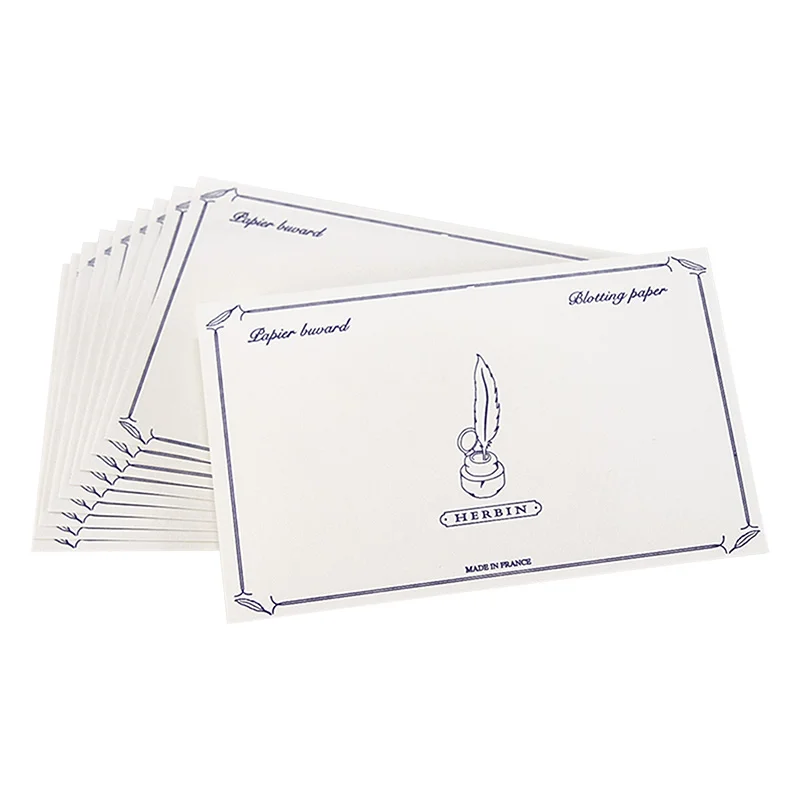Samiro YunokiChair and BucketWeeks Hardcover Book (Japanese)
There’s a chair, and there’s a bucket. The cover of this Weeks book perfectly captures the unassuming, day-in-the-life worldview of the Hobonichi Techo. The lovely artwork is by dye artist Samiro Yunoki, who even today is still actively creating art.
The outlines are painted over a simple white background with a bamboo brush. Inspired by Dutch delft tiles, the art on this techo is completed by the blue dotted on all four corners.
The material on the surface of the cover is slightly textured to the touch.
The spine reads 2021, and the bottom left of the back cover is embossed with the name Hobonichi.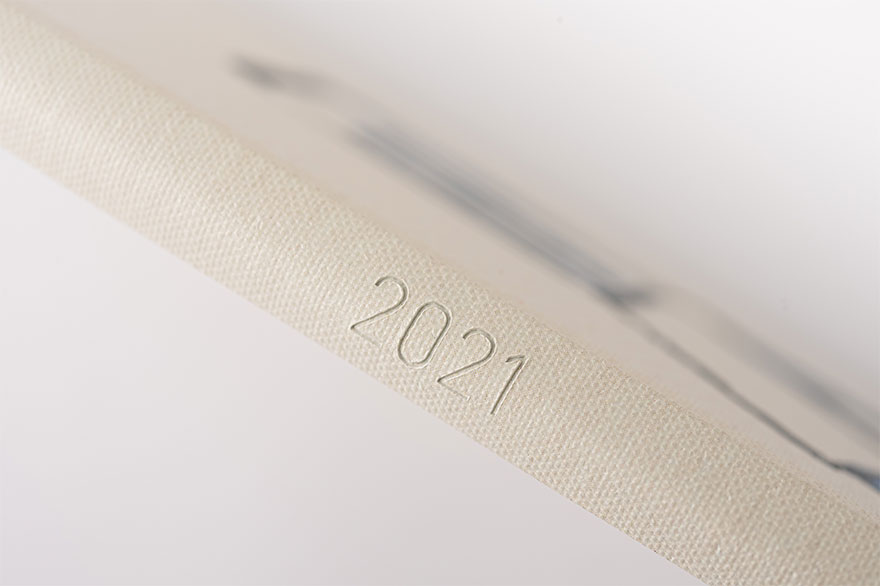
When asked why he chose a chair and bucket, Yunoki replied, “It’s something that you see on a daily basis. There’s something admirable about it.” The art illustrates Yunoki’s warm gaze at these things that are not special or fancy, but merely exist alongside us.
When you order this Hobonichi Techo Weeks, you’ll receive a clear, adhesive corner pocket you can stick anywhere you like.
If you’d like storage space or a way to change up the look of your Weeks book, you can customize your book by pairing it with a Weeks cover.
<See Weeks cover lineup>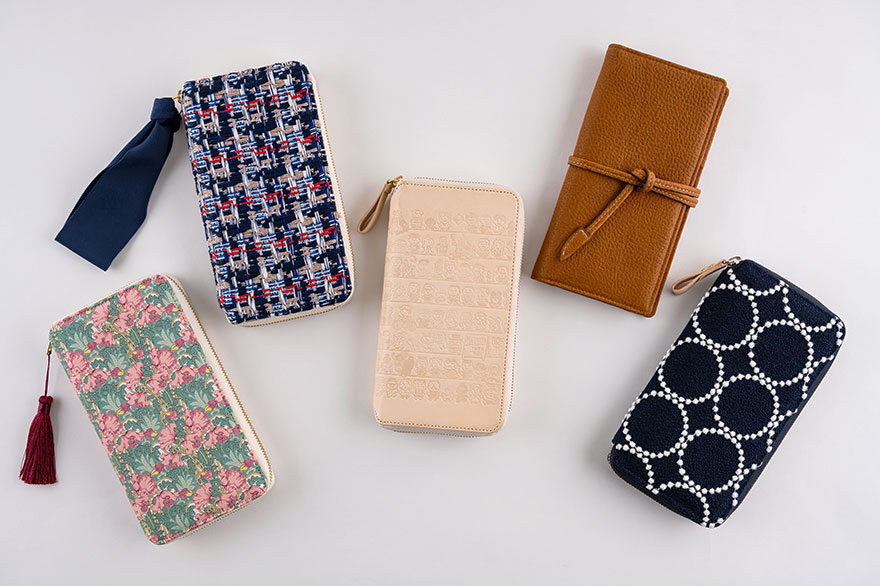
About Samiro Yunoki
Born in 1922, Samiro Yunoki became fascinated by the Japanese folk art movement while working at the Ohara Museum of Art in 1946 and began studying the work of Soetsu Yanagi. After studying under Keisuke Serizawa he began exhibiting his own stencil-dyed art. Yunoki, a frequent exhibitor at the Kokugakai Exhibition and an emeritus professor at Joshibi University of Art and Design, works in a number of other media as well, including wallpaper, printmaking, and books. He won a bronze medal at the Brussels World’s Fair in 1958.
Interviews with Samiro Yunoki on Hobo Nikkan Itoi Shinbun:
Staff List
- Photographer
- Styled Images: Kazufumi Shimoyashiki / Product Detail: Hiroyuki Oe
- Stylist
- Kaho Yamaguchi
- Makeup & Hair
- Yoko Hirakawa (mod's hair)
- Model
- Asako Ogawa
![]()
- Samiro YunokiChair and BucketWeeks Hardcover Book (Japanese)
- 2,640
Specifications
- Overview
Size W: 94 x H: 188 x T: 10 mm / W: 3.7" x H: 7.4" x T: 0.4"
*Specifications may vary slightlyWeight Approx. 137 g Main material Synthentic canvas, paper - Weeks Book (Japanese / April Start)
Language Japanese Pages 240 pages Binding Stitch-binding Paper Type Thin, light Tomoe River paper resistant to bleeding and designed for planners. Graph Paper Size 3.55 mm Yearly Calendar 2020, 2021, 2022 Yearly Index Apr. 2021 - Mar. 2022 (2 pages) Monthly Calendar Mar. 2021 - Apr. 2022 (28 pages) Daily Quotes One per week (Japanese) Weekly Calendar Mar. 1, 2021 - Apr. 3, 2022 (114 pages)
*All weekly pages include quotes.Graph Paper 75 pages Informational Pages Shorthand Note-Taking / Graph Paper / Using Common Items to Measure Size / My 100 / Solar Terms / Weather Terms for your Techo / Basic Posture Techniques / Emergency Preparedness / Age Table / Conversion Chart / Getting the most of Hobonichi / Contact List / Personal Notes Listed Information Week of the year / Rokuyo (traditional Japanese calendar) / Solar terms / Japanese holidays / Moon phase (weekly pages include every phase, monthly calendars only include full and new moon)
*The 2021 Weeks book (April Start) is produced based on information as of September 2020, and therefore does not reflect the amendment in dates of the following national holidays: Marine day, Mountain day, and Sports day. We apologize for the inconvenience caused and ask for your kind understanding.
Please Read Before You Buy
In order to provide you with the most satisfaction for your product, we've compiled a list of warnings, potential issues, and tips to keep in mind for this particular product. Please be sure to read this information carefully before placing your order.
- Test fountain pens before regular use
The Hobonichi Techo's Tomoe River paper is designed to prevent bleed-through, but some fountain pens and water-based ink pens are not compatible with this paper. When switching to a new pen, we recommend testing the pen somewhere in the book, such as the back memo pages, to see if the ink bleeds through or takes an especially long time to dry.
- Cover corners are slightly bumpy and shiny
The corners of the cover contain light traces of press marks, shines, and lumps. This is an unavoidable part of the manufacturing process.
- Avoid storing in hot and humid places
Please avoid storing your product in hot, humid places or placing it atop other objects for long periods of time as this may result in lower quality and color stains.


